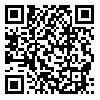Mon, Apr 7, 2025
[Archive]
Volume 13, Issue 1 (3-2023)
ASE 2023, 13(1): 4041-4050 |
Back to browse issues page
Download citation:
BibTeX | RIS | EndNote | Medlars | ProCite | Reference Manager | RefWorks
Send citation to:



BibTeX | RIS | EndNote | Medlars | ProCite | Reference Manager | RefWorks
Send citation to:
Khoorishandiz M, Amirkhani A. Impedance evaluation of Li-ion battery with different continuous mother wavelets: A comparative study. ASE 2023; 13 (1) :4041-4050
URL: http://www.iust.ac.ir/ijae/article-1-635-en.html
URL: http://www.iust.ac.ir/ijae/article-1-635-en.html
Iran University of Science and Technology
Abstract: (8345 Views)
As electric vehicles become more popular, we need to keep improving the lithium-ion batteries that power them. Electrochemical impedance spectroscopy (EIS) is used based on a discrete random binary sequence (DRBS) to reduce excitation time in the low-frequency region and excite the input of the battery. In this paper, voltage and current signals are processed with wavelet transform for impedance evaluation. In using wavelet transform, choosing the most optimal mother wavelet is crucial for impedance evaluation since different mother wavelets can produce different results. We aim to compare three types of continuous Morse mother wavelet, continuous Morlet, and continuous lognormal wavelet, which are among the most important mother wavelets, to determine the best method for impedance evaluation. We used the dynamic time-warping algorithm to quantify the difference between the initial values obtained from standard laboratory equipment and the impedance evaluation through three different continuous wavelets. Our proposed method (lognormal wavelet) has the lowest difference (3.4086) from the initial values compared to the Morlet (3.5504), and Morse (3.5457) methods. As a result, our simulation shows that the lognormal wavelet transform is the best method for impedance evaluation compared to Morlet and Morse wavelets.
Type of Study: Research |
Subject:
Modern Powertrain (hybrid, electric, CNG, bio, ...)
Send email to the article author
| Rights and permissions | |
 | This work is licensed under a Creative Commons Attribution-NonCommercial 4.0 International License. |






